10 Most Important Items to Keep In Your Car
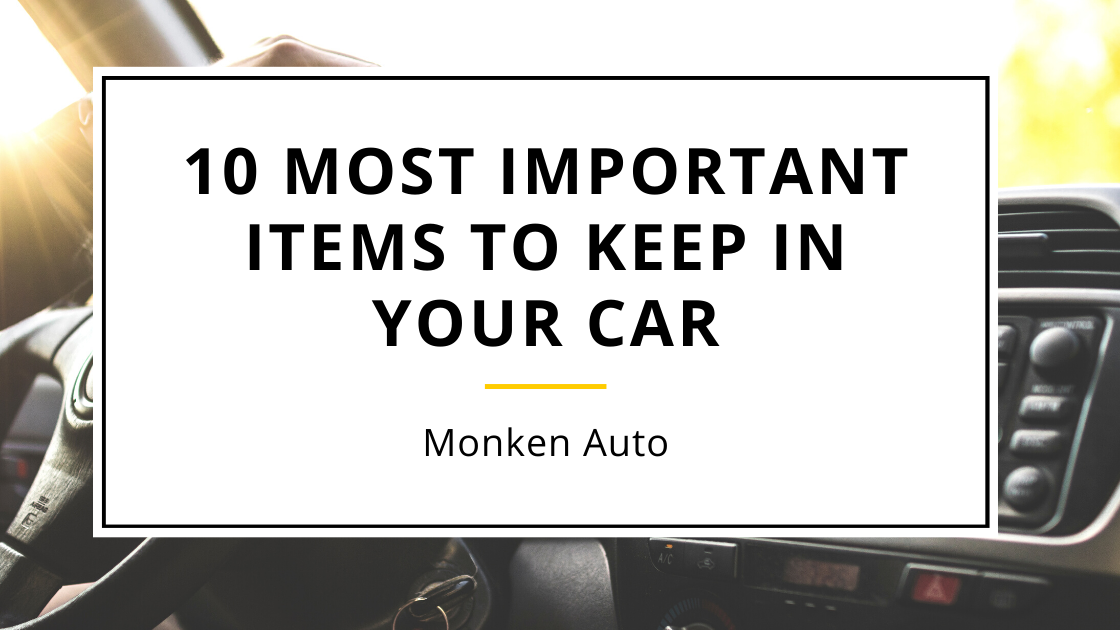
Nissan’s New Intelligent Rear View Mirror
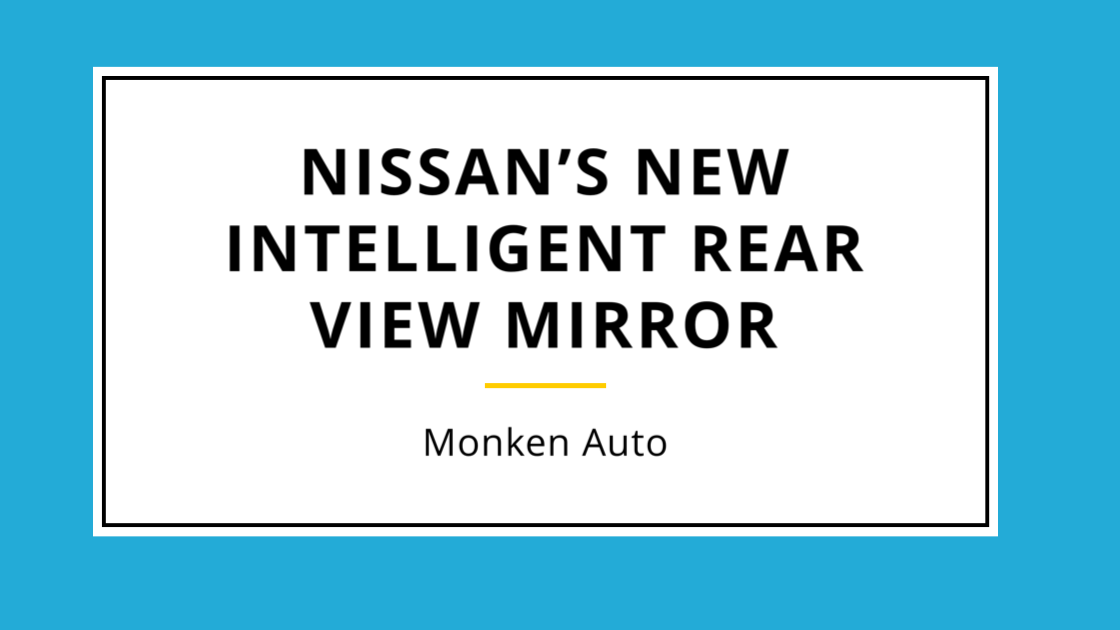
Intelligent Rear View Mirror
Nissan’s new Intelligent Rear View Mirror (I-RVM)1 adds a built-in LCD monitor within the traditional rearview mirror to help provide clear rearward visibility unimpeded by traditional obstacles such as cargo or tall passengers. The 2018 Nissan Armada is the first Nissan vehicle to offer the new I-RVM technology. I-RVM is standard on the Armada Platinum grade.
The I-RVM system utilizes a high-performance, narrow-angle camera and a specially shaped LCD monitor, with a unique aspect ratio of approximately 4:1, versus conventional monitors’ 4:3 or 16:9. The camera projects a clear image onto the monitor for a better view, as well as a more comfortable driving experience.
The high-quality camera and image processing system implemented in the LCD monitor consistently results in a clear image with minimal glare, even during sunrise or sunset conditions or when the vehicle is being followed by a vehicle with strong headlights.
What Exactly Is That New Car Smell?
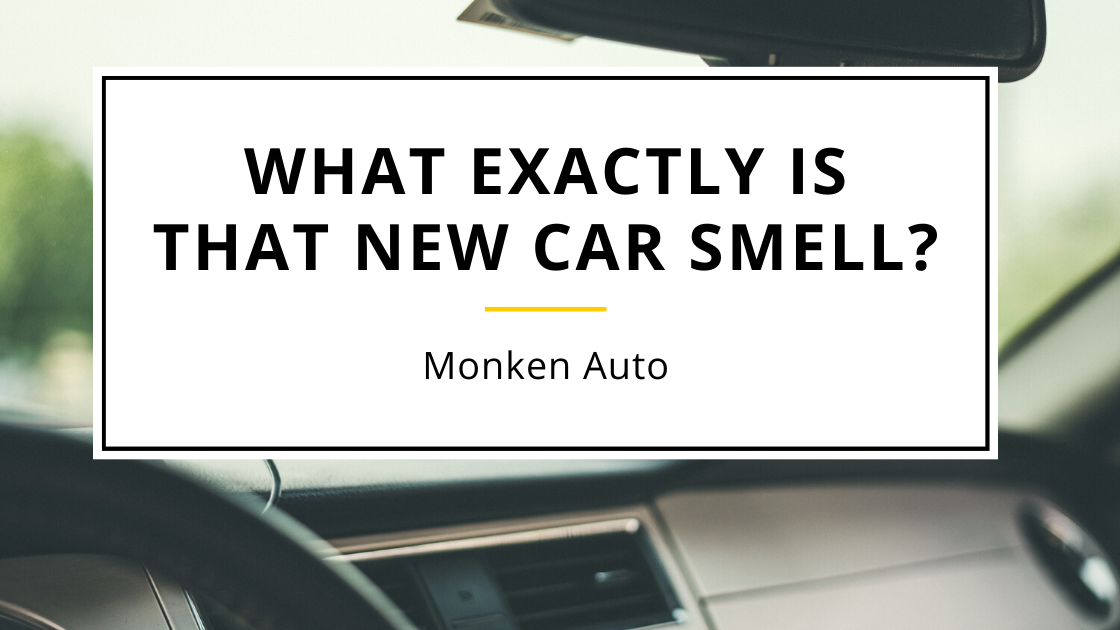
By Rachel Swaby for Giz Explains
The smell of a new car is intoxicating. It reminds us of money and shiny objects. It evokes that golden period before repeat coffee stains, moldy Tupperware, and our trunk’s transformation into a Good Will depository change the way we feel about our car.
But it’s kind of a weird smell, right? It’s so different from chocolate chip cookies or eucalyptus or whatever else we identify as pleasant. So we decided to get to the bottom of the new car smell. What is it?
The answer, according to Toyota’s color and trim manager Janis Ambrose Shard, certainly leans toward a more Pavlov’s dog-type reaction. We like the smell because we like the car. Unfortunately, says Shard, “The smell is mostly organic compounds in the vehicle off-gassing. Anything that is vinyl or plastic—the foam lamination on the seat surface, the plastic on the dash or on the door panel—it’s the volatile organic compounds (VOCs) coming out of them that causes that smell.” In other words, without the relationship to a brand new car, the smell would just, you know, smell.
VOCs probably ring a bell because they’re air pollutants. And they can do a number on your health. And they’re everywhere. Thousands of household products-from paints to cleaning products to waxes-all emit the gasses, and they’re normally found in low concentrations in indoor air. In your car, petroleum-based solvents in plastic and vinyl are to blame. VOCs escape from the dash and the seats because they don’t require super high temperatures to evaporate. A normal ol’ Tuesday will stir them up.
Another VOC fun fact: You know that weird foggy film that builds up on the inside of your windshield? Blame the new car smell. The same VOCs that we’re sniffing can be responsible for mucking up our windows, too.
“That new car smell is not something we strive to achieve,” says Shard. If anything, automakers are trying to cut it. Toyota has moved from solvent-based glues to water-based alternatives to slash VOCs, and other automakers, like Ford, have experimented with swapping petroleum-based seating for soy based foam. Natural materials, though, have their own set of challenges. For instance, Ford had to go through a lot of veggie-based foam trials to find one that didn’t offend the consumer’s nose. And because the natural material holds a lot of moisture, living somewhere like Louisiana where it’s both hot and humid, can cause some natural materials to deteriorate rapidly, says Shard.
Basically, they’re working on taking that new car smell away. In the meantime, we should start working on ending our affinity for inhaling VOCs. Let’s instead focus our olfactory efforts on new car leather. See, during manufacturing, the warm leather smell disappears from the pieces that go into cars. Leather manufacturers, knowing that the smell is important to us, make sure to add that smell back in before anything is shipped to consumers. Thank goodness we still have one unnatural smell to happily cling to.
Nissan Introduces New Safety Feature Rear Door Alert
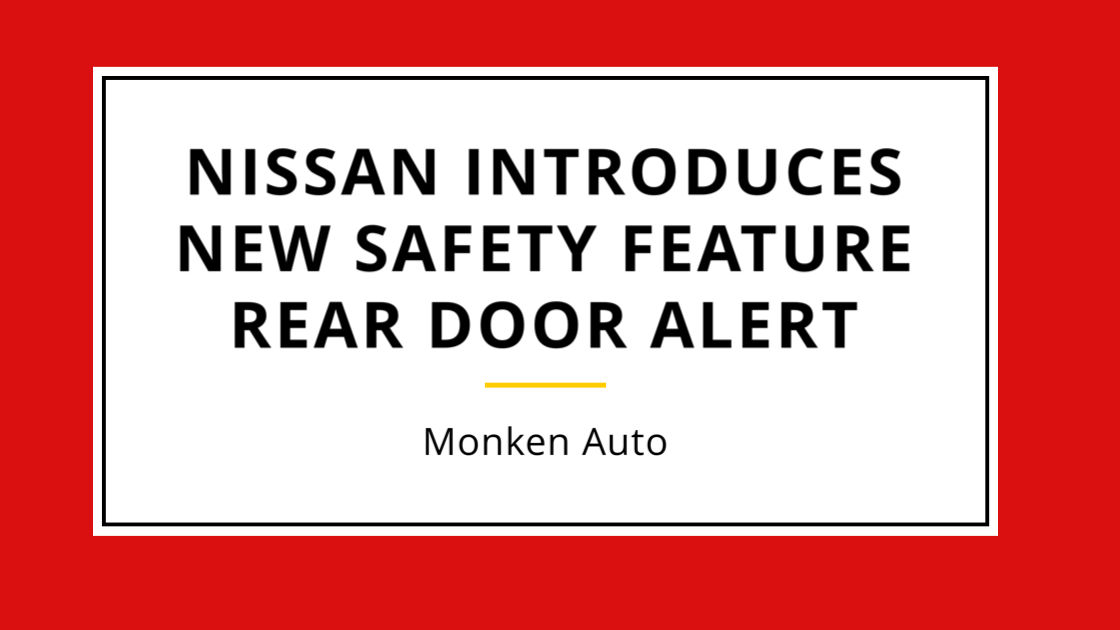
By blogsadmin | Posted in Nissan Pathfinder, Safety on Monday, August 21st, 2017 at 4:29 pm

What is the Nissan Rear Door Alert?
In the summer, temperatures in a parked car can climb quickly, reaching dangerous temperatures. That’s why Nissan recently added a new safety feature that is designed to help remind drivers to check their back seat before exiting or leaving their vehicle. The Nissan Rear Door Alert was designed to ensure that nothing is forgotten in the back seat of a vehicle.
Whether you’re packing your new Nissan vehicle up with groceries or driving home from the park with your furry friend, the last thing you want to do is forget to unload the back seat of your vehicle. As temperatures inside your vehicle in the summer and even the fall quickly rise, it can mean a minor inconvenience like melted ice cream, or a potentially dangerous situation for pets. That’s why it’s important for busy drivers to know that Nissan has your back, giving you reminders to check the back seat to ensure that everything – and everyone – is out of the vehicle.
[Read more: Nissan Models with AWD]
How does the Nissan Rear Door Alert Work?
When the new Nissan Rear Door Alert feature is enabled, a door sensor is able to tell if a rear door was opened when you first entered and started the vehicle. If the driver then walks away with their smart key without reopening a rear door, the Nissan’s horn will honk to remind them to check their back seat.
Nissan’s Rear Door Alert system is the first of its kind to offer an external, audible alert. The feature will be available on the upcoming 2018 Nissan Pathfinder.
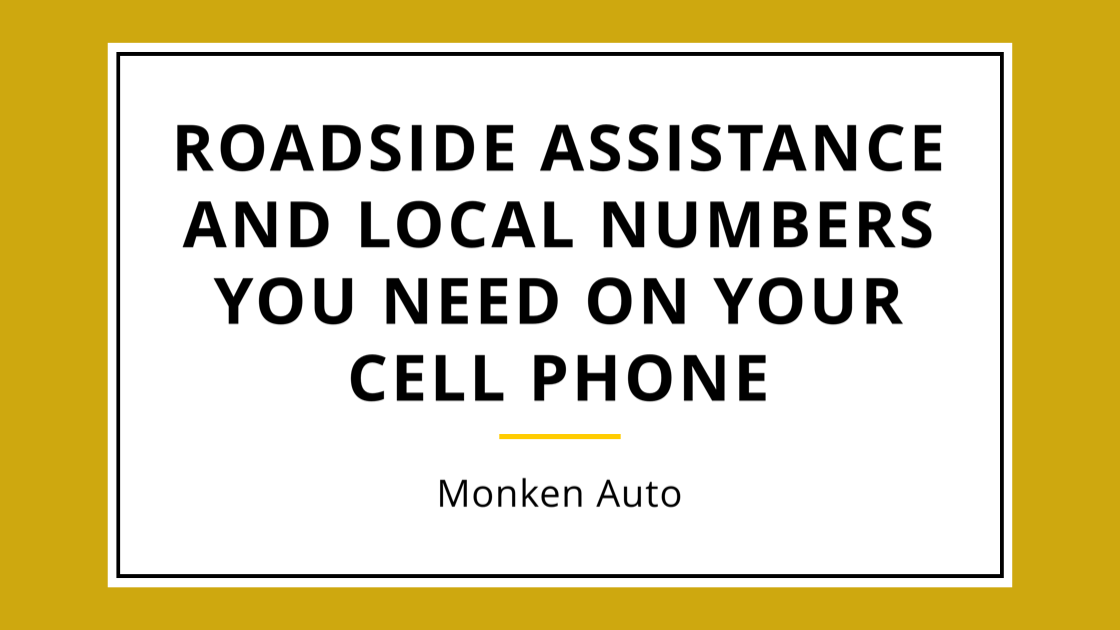
We want to make sure our customers know who to contact in case they ever have vehicle problems while on the road. You may want to print this and put it in your vehicle or make sure you have these numbers in your cell phone.
If you have a factory or extended warranty you may contact the following:
Chrysler Roadside Assistance – 800-521-2779
Nissan Roadside Assistance – 800-225-2476
Chevrolet Roadside Assistance – 1 800 Chev-usa (243-8872)
Toyota Roadside Assistance – 800-331-4331
First Extended Roadside Assistance – 800-270-8447
CNA Roadside Assistance – 877-373-9780
AUL Roadside Assistance – 888-810-5150
Local numbers to contact:
Don’s Body Shop – 618-532-4574
Wes Monken – Owner – 618-918-8065
3 Features About the New 2017 Jeep Compass

Should You Buy or Lease a Vehicle?

Do you know all the pros and cons of each option?
There are several factors to consider when deciding to buy or lease a car, as both options have several benefits and downsides. For example, in addition to the monthly lease or loan payment, you need to consider how much you plan to drive, how often you’d like a new car, and if you plan to customize.
Benefits of buying a car
There are several advantages to owning a car, as opposed to leasing. Here are just a few of the most important ones:
- You own the asset — Assuming that you finance the car, it can take a few years to build up any serious equity (where you owe less than the car’s value), but eventually you’ll have an asset that can be sold or traded in if needed.
- No payments once your loan is repaid — When you buy a car, you’ll eventually pay off the loan and own the car free and clear, at which point you’ll no longer have a monthly car payment. When you lease, you’ll always have a car payment.
- No mileage restrictions — If you own your car, you can drive it as much as you’d like without having to worry about paying a penalty. On the other hand, if you lease, you’re generally limited to 10,000, 12,000, or 15,000 miles per year before you’ll start accumulating penalties.
- No charges for excessive wear — When you lease, you’ll generally be held responsible for anything that could be considered beyond “normal wear and tear.” If you get a dent in a car you own, for example, you can choose to fix it or simply live with the dent and save the money.
- Customization — A vehicle you own can be modified or customized as you see fit. Leased vehicles need to be returned in their original state, so any modifications will need to be removed, which is often impossible or very expensive.
Benefits of leasing a car
On the other hand, leasing has its advantages as well:
- A new car every two-to-four years — Simply put, if you enjoy having a new car, leasing could be the way to go.
- Little or no maintenance worries — For the most part, leased cars are under factory warranties throughout the term of the lease agreement. In my case, this is the primary motivating factor for leasing — I don’t like uncertainty, especially when it comes to potentially costly repairs. Leasing allows me to avoid this worry.
- Cheaper monthly payments — While it depends on the particular make and model, as well as factors such as your down payment, you can generally lease a car for less money per month than it would cost you to buy it. In full disclosure, I lease my car, and the difference between my lease payments and what the payment would have been on a 60-month car loan was about $150 per month. When you lease, you’re only paying for the vehicle’s expected depreciation and associated charges, not for the residual value of the vehicle.
Understanding Vehicle Warranties
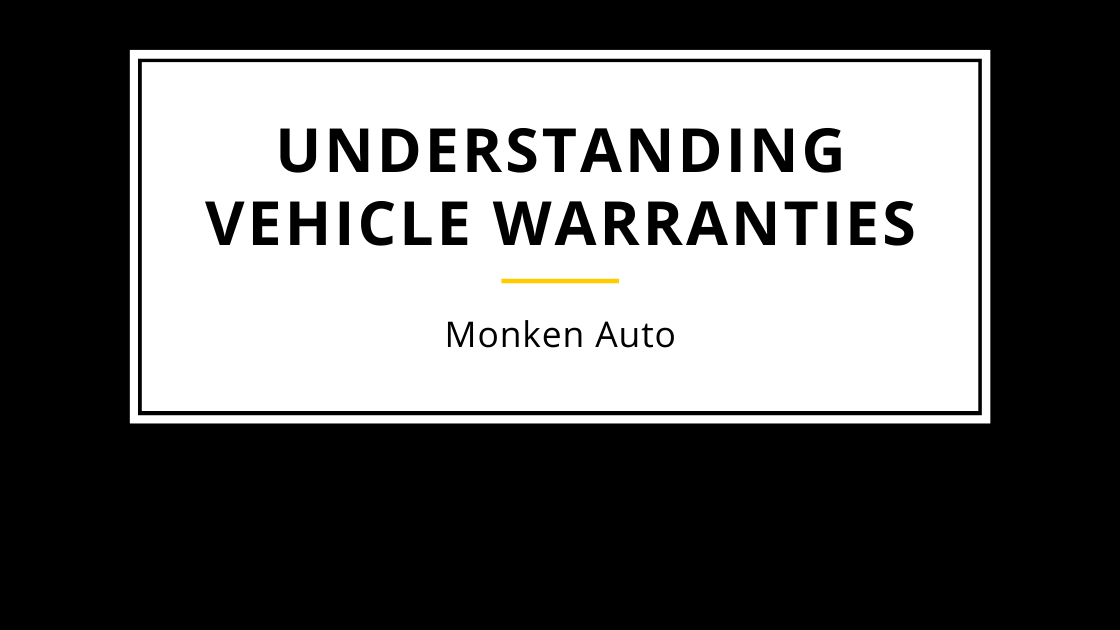
All new cars and trucks come with a factory warranty. Moreover, all new vehicles will generally come with a bumper-to-bumper warranty that lasts a minimum of 12 months or 12,000 miles. However, most manufacturers now offer bumper-to-bumper warranties that last for a minimum of three years or 36,000 miles—whichever comes first. Federal laws do make certain requirements that must be met for new car warranties regarding emissions systems and the warranties that cover them. According to federal law, vehicles must provide warranty coverage for the emission system for a period of five years or 50,000 miles.
Warranty information for your vehicle will generally be listed in a manual type book similar in appearance to your owner’s manual. While all warranty manuals may appear similar in appearance, the warranty information contained inside may vary considerably depending upon the manufacturer.
Basic New Car Warranty Information
With all new car warranties, most major systems and subsystems of a vehicle are covered for a specific period of time and provide warranty protection against malfunction or defect for most parts on a new car.
However, consumable parts, or parts that generally need to be replaced periodically, such as windshield wipers, fluids, belts, and accessories are generally not covered under any manufacturer’s new car warranty. So, you should check your owner’s manual for specific warranty information for your vehicle. In some cases, tires on your vehicle and car battery may be covered but, you should be aware that some manufacturers may not.
Also, different car manufacturers provide various levels of warranty coverage for accessories, like air-conditioning, sunroofs, premium sound systems and other options. Some manufacturers include them for coverage under the terms of the new warranty while some require you pay for replacement parts while the manufacturer pays for labor. Almost all new car warranties cover the drive train, or engine, driveline and transmission.
New Car Warranty and Emissions
When reviewing your new car warranty, you should pay particular attention to the emissions control section. This is the part that guarantees emissions performance for your vehicle.
An important note, because many states have minimum requirements for pollution control and carbon emissions released from your vehicle. If your vehicle fails to meet the standards of your state, you may be prevented from driving on state roads and highways. Also, repairing a damaged or defective emission control system can turn out to be very costly. So, you should always check to see if there is coverage. If you feel the warranty protection is inadequate, you might want to consider purchasing an extended warranty or mechanical breakdown policy to supplement your new car warranty.
Maintaining Your New Car Warranty
While all new cars and trucks come with a manufacturer’s warranty, you are required to perform certain steps in order to make sure your coverage remains in effect. For example, you will need to make sure you follow the manufacturer’s directions for having oil changes and routine maintenance performed.
If you fail to follow the manufacturer’s guidelines for changing your oil or performing routine maintenance, the car manufacturer will many times simply choose to void your warranty. Under the terms of your current warranty contract agreement, the manufacturer has the right to cancel your warranty if you do not reasonably take good care of your vehicle.

Are you a female or a first time buyer that feels uncomfortable going into a car dealership to look at a vehicle? If so, here are 5 tips to help guide you into feeling more comfortable the next time you need to purchase a vehicle.
1. Research the models and prices online and know what is a competitive offer.
2. Check Car Fax or Autocheck to research a vehicle’s history.
3. Ask the dealer for the customer contact information that traded in the vehicle if you are looking for pre-owned.
4. Ask for service history and service work that was performed on the vehicle at the dealership.
5. Check guidebooks such as Kelley Blue Book or NADA for a fair purchase price on your trade in.
If you are considering Monken Automotive as a potential car dealer, we would like to inform you on a few ways we believe you will be more comfortable, including 14 female employees that are available to help you.
Walking into a showroom can be intimidating, therefore, we have 4 female employees in our Chrysler Nissan sales area. They are our Receptionist Desk, Office Manager, Internet Sales and General Manager. In our Chevrolet Buick GMC store, we have 5 female employees. They are our Reception Desk, Title Clerk, Office Manager, Accounting and our Owner. They are all available and willing to lead you in the right direction.
Driving into a service department can be just as intimidating. We have 5 female employees that work in our service departments and will help you with any questions about servicing your vehicle. At our Chrysler Nissan store Amy Monken-Brandt started as a service advisor 19 years ago and is now our Service Manager. Dorothy Cates has been in our service department for 5 years and Mel Jackson for 4 years. At our Chevrolet store, Amy Zalos is our Service Manager and has been with us for a year and we just hired Heather Hoffman.
Being able to talk to a female service advisor should encourage you to ask any questions without feeling lost or embarrassed. “We are not tech savvy, but we want to make sure your needs are met. We can ask the technicians their concern and put it into terminology that you will understand,” adds Service Manager, Amy Monken-Brandt.
Our waiting areas were created to make you feel as comfortable as possible. We have television, an Apple computer with internet access, vending machines, free popcorn and updated seating… all to make you feel at home.
Here is a review from one of our female customers.
Sara Presley Burnett reviewed Monken Dodge Chrysler Jeep Ram Nissan — 5 star
October 14 ·
“As a woman, I was expecting them to think I didn’t know what was going on and to try to take advantage of me. What I got was the complete opposite. I couldn’t have been more pleased with the way I was treated and respected. I have already recommended them to everyone I’ve talked to about my new car. Very happy and I will definitely be back for my next one.”
How Does Your New Vehicle Get to Our Lot

Blogger – Lance Marcum
Ordering a vehicle starts with our consensus cycle which takes into account our sales history and what we are predicting to sell. From there, the build cycle starts with our “allocations” on Thursday of every week. As far as knowing what works well for us, I look at our sales history and a program called “DART”, which lets me know what General Motors recommends that I build. We always try to keep a nice combination of colors and models available. Also, we can always build a vehicle specifically for a customer if they would like.
Once the order is submitted, it then goes into production. The process from the vehicle being built to on the lot is generally 4 to 8 weeks, depending on the vehicle. The ones being produced in Wentzville, MO are obviously here quicker than the ones that have to be shipped via railway.
The vehicles come to our lot via transport trucks.
[wpvideo 2gkWDWyg]
When the vehicles arrive, sales consultants check to make sure there is no damage on the vehicle and then sign for approval. In the event that a vehicle has damage, it is noted and General Motors takes care of the repair. This is rare, but does happen from time to time. Once that is completed, the keys are tagged with a stock number and the vehicle goes into our service for a delivery inspection. The inspection consists of a full inspection in which we top off fluids. In essence, the dealership is doing their due diligence to confirm that General Motors has built the vehicle up to expectations.
Once that is completed, the vehicle goes to our detail department to get cleaned up and then pictures are taken for our website. The goal is that the vehicle goes through this entire process within 2 to 3 days of arrival so it is ready to sell.







